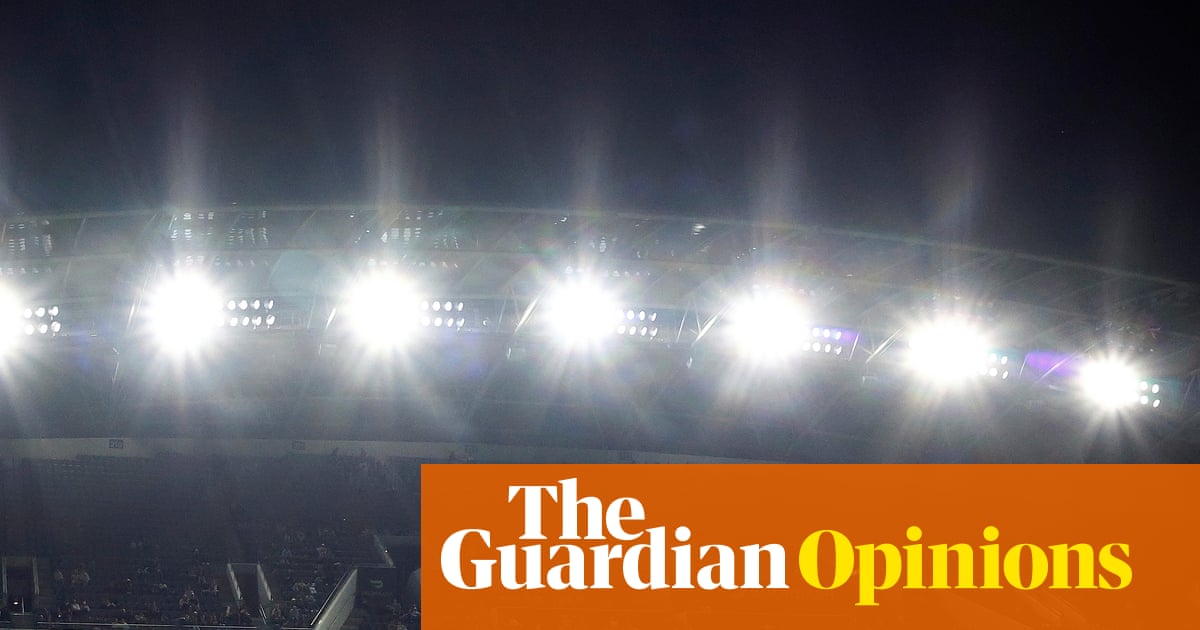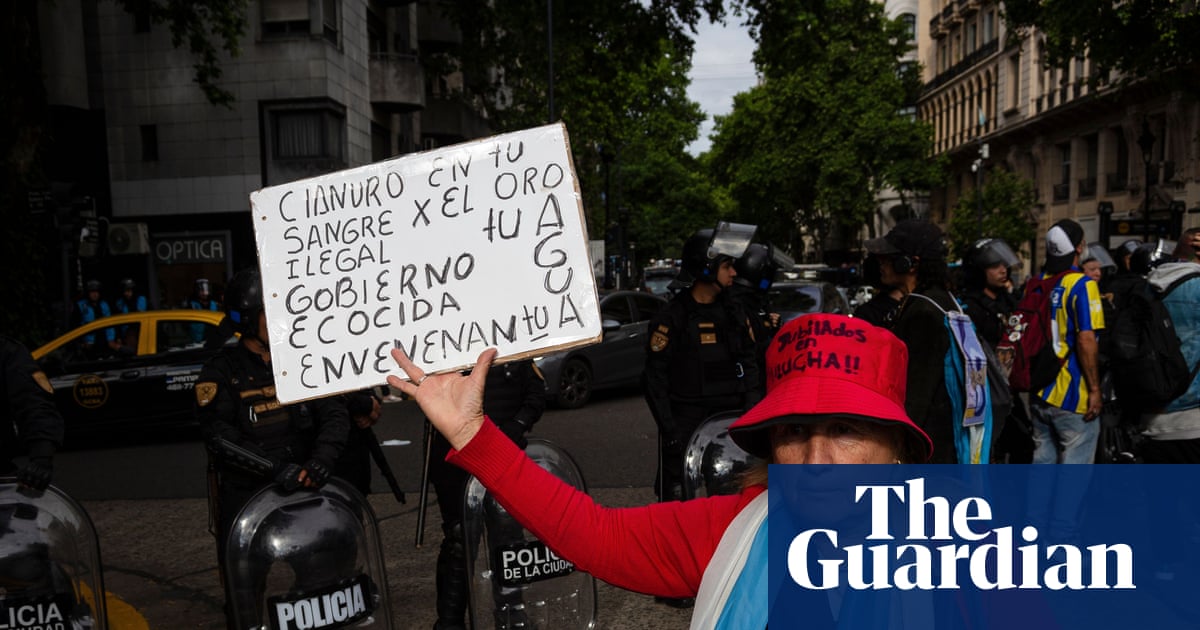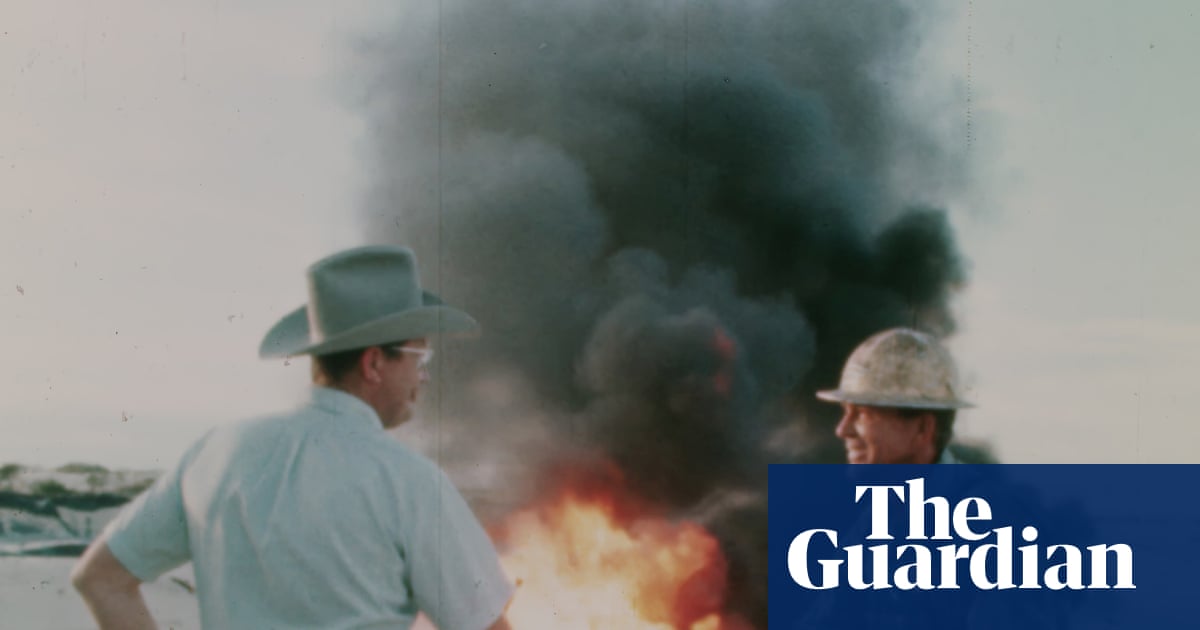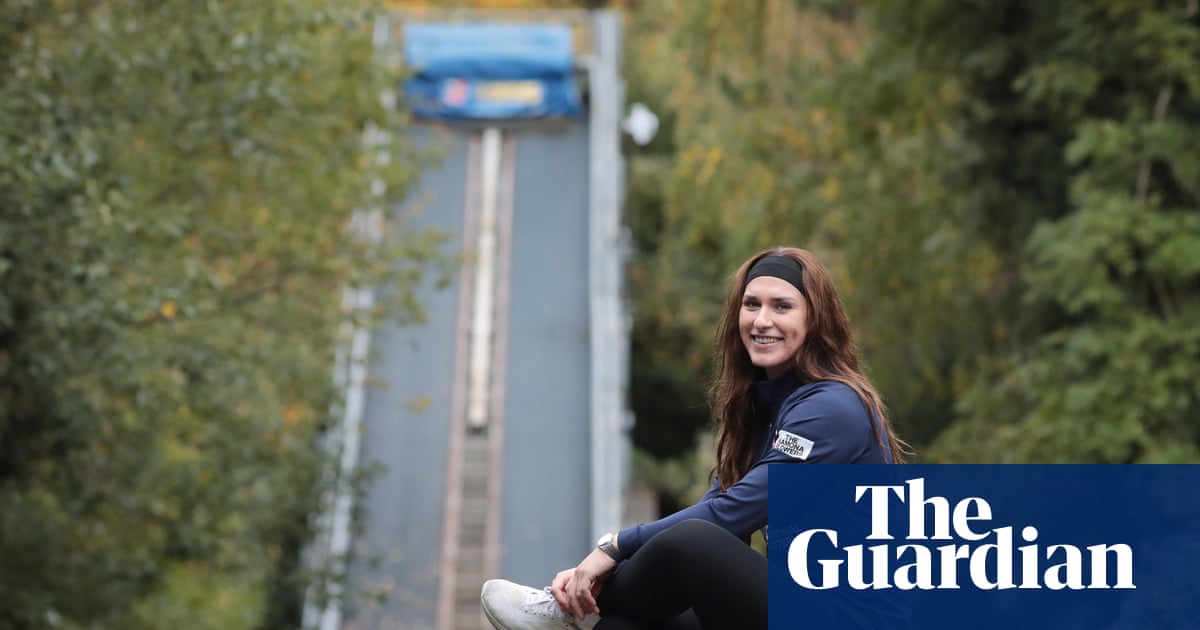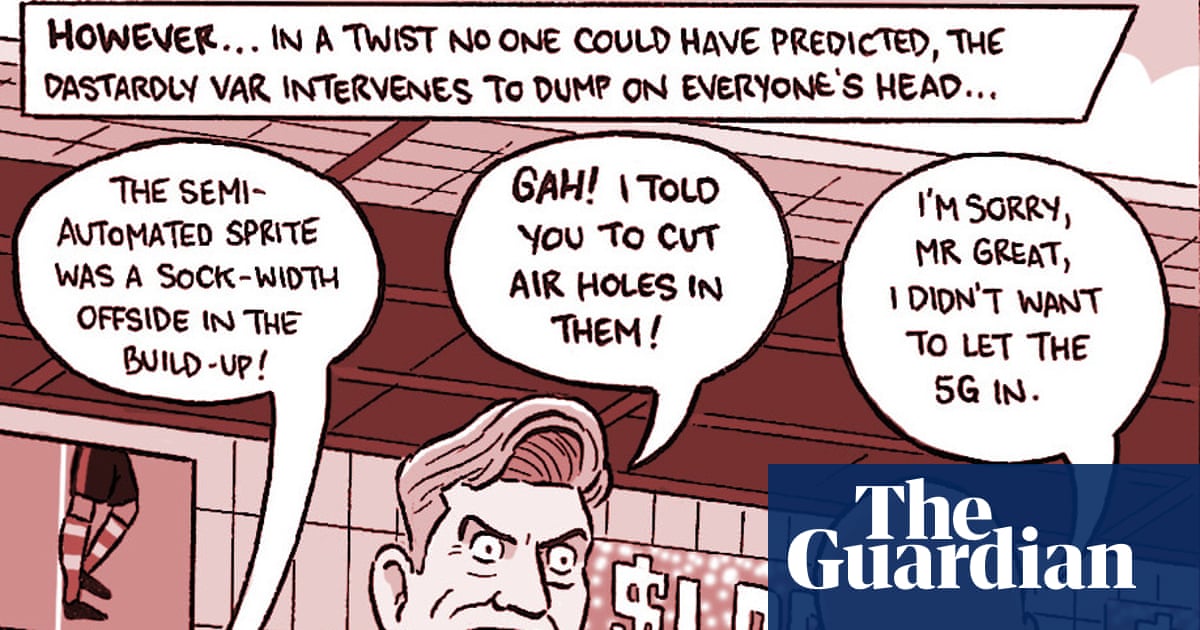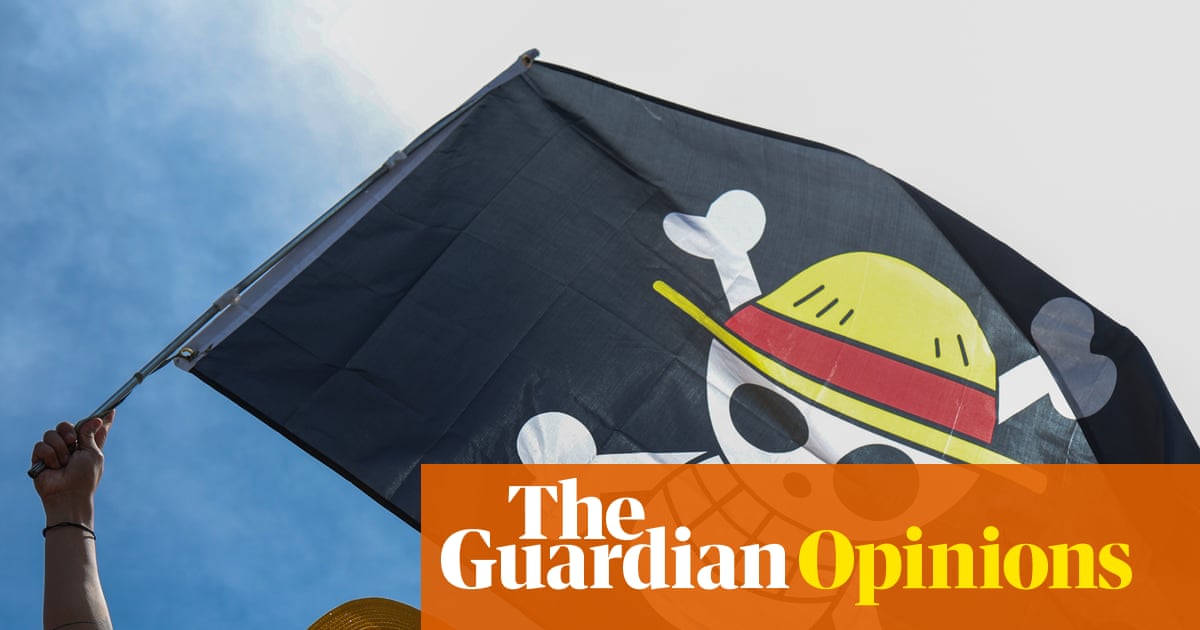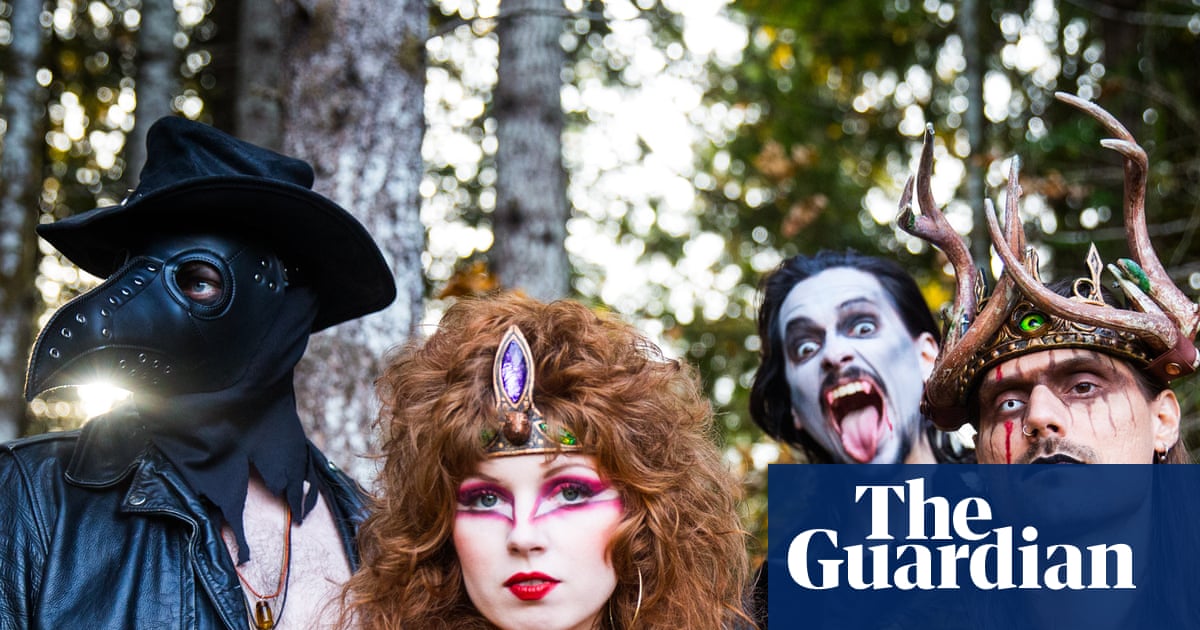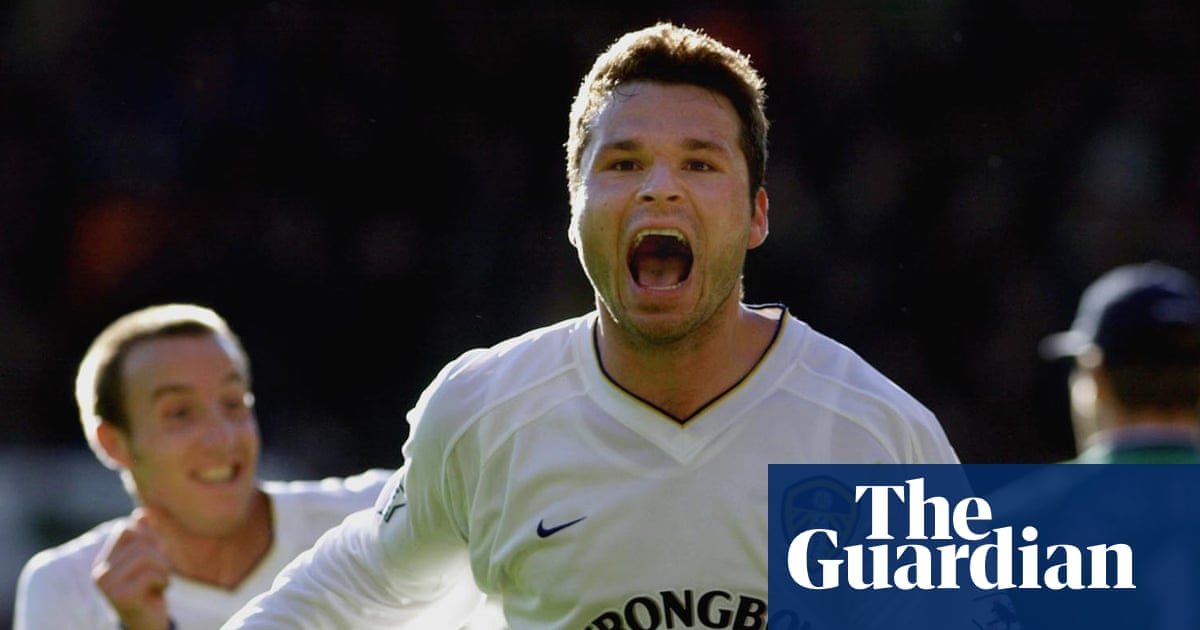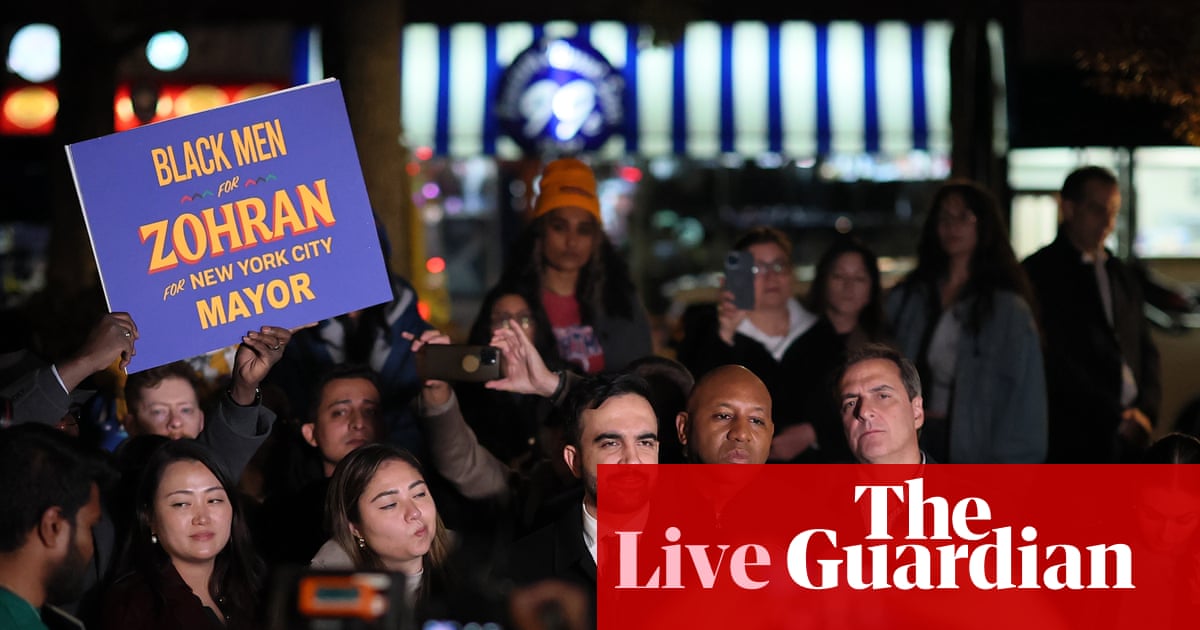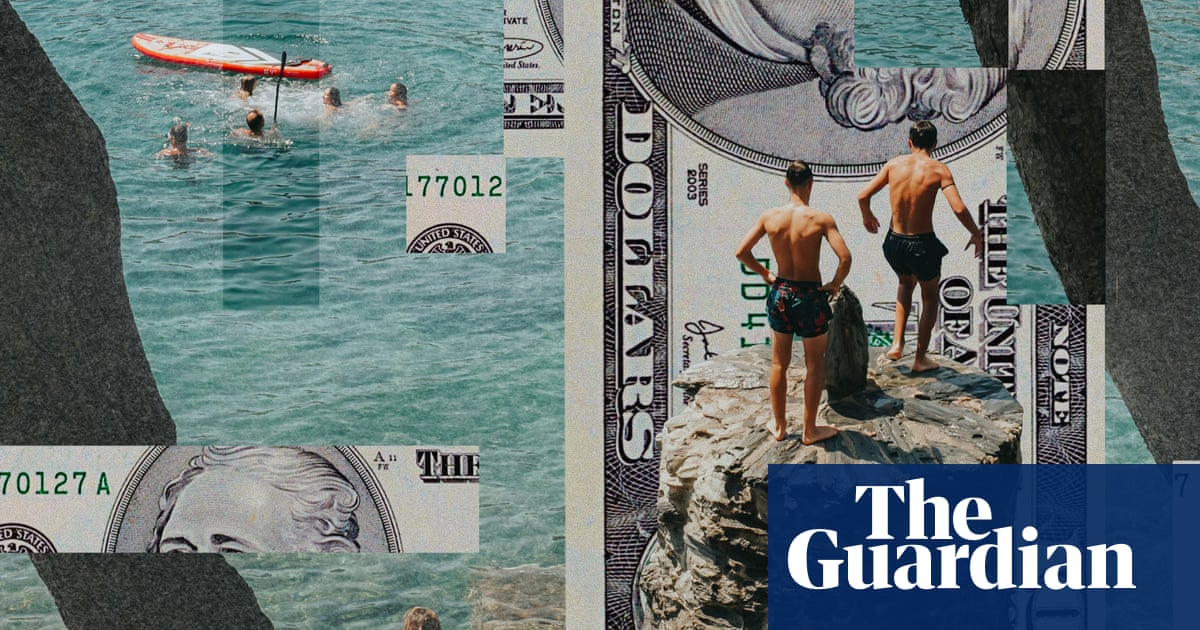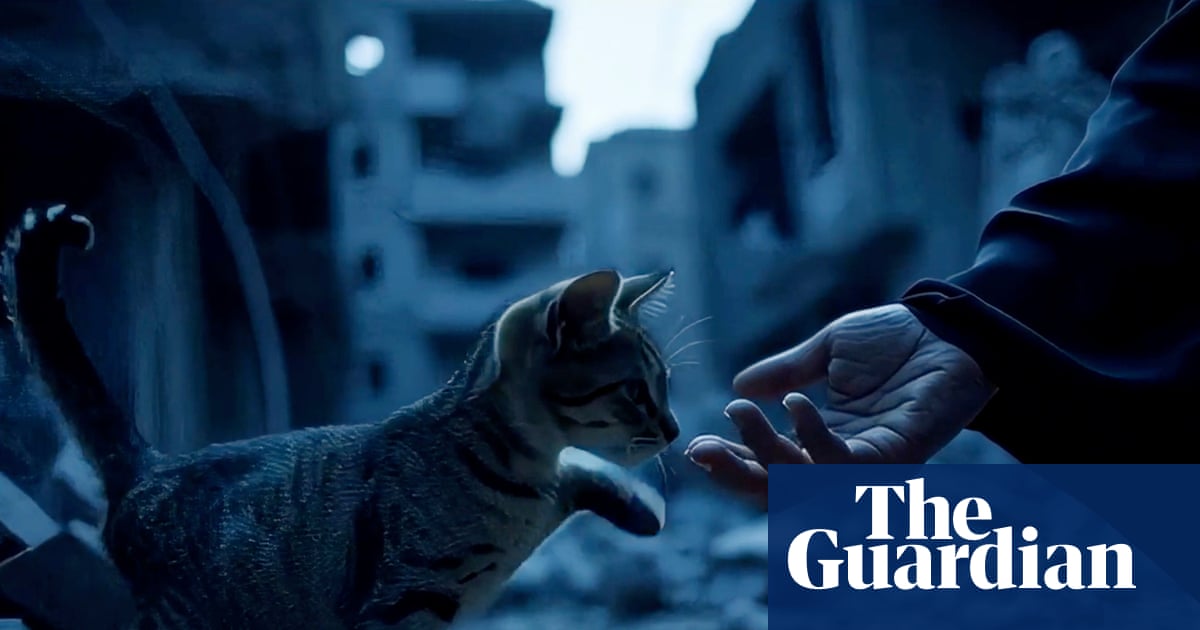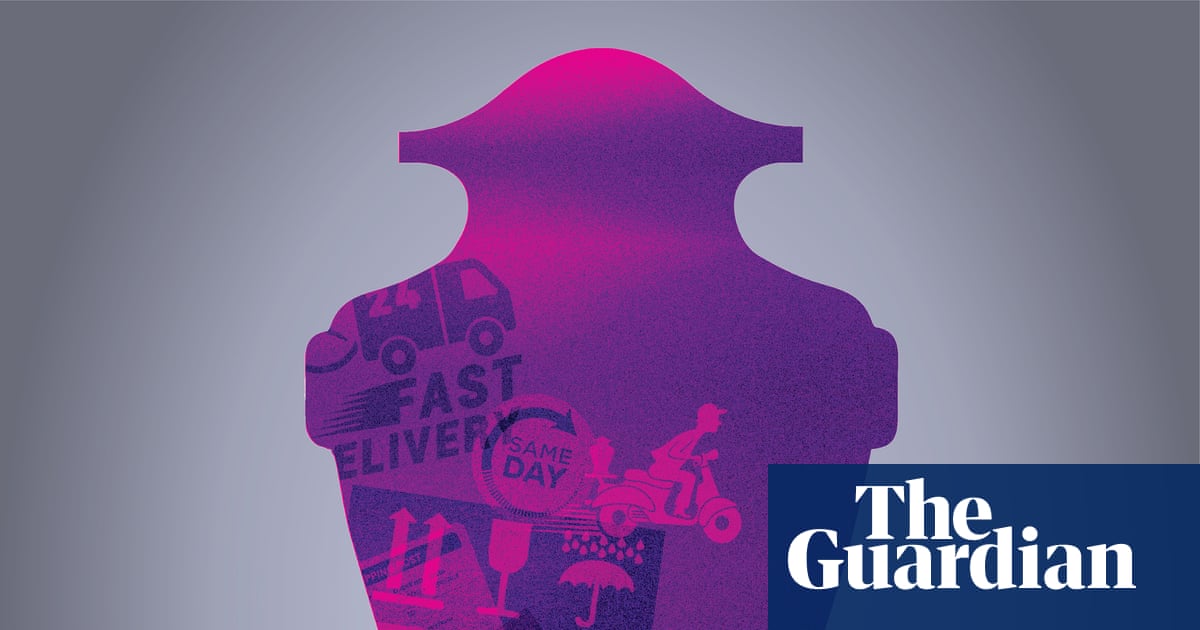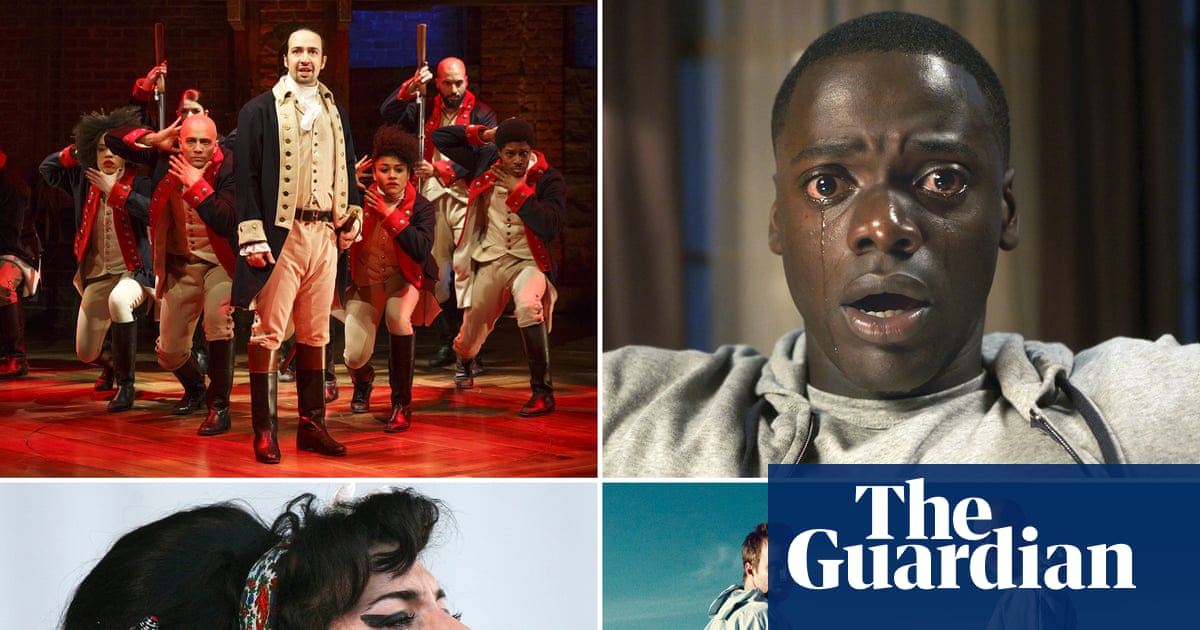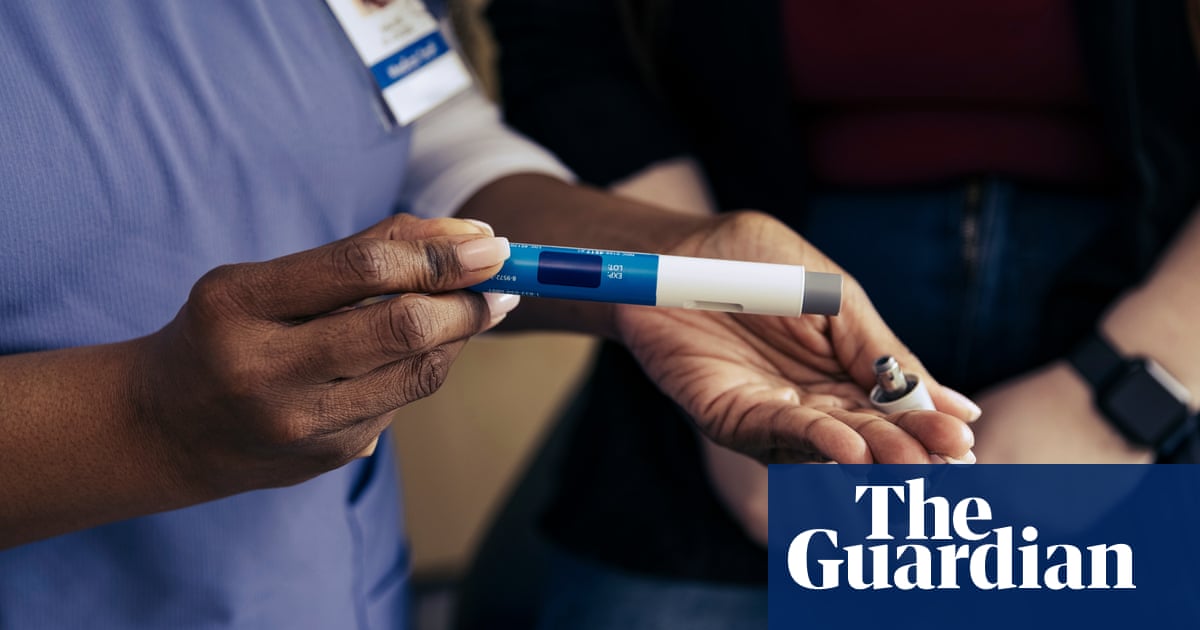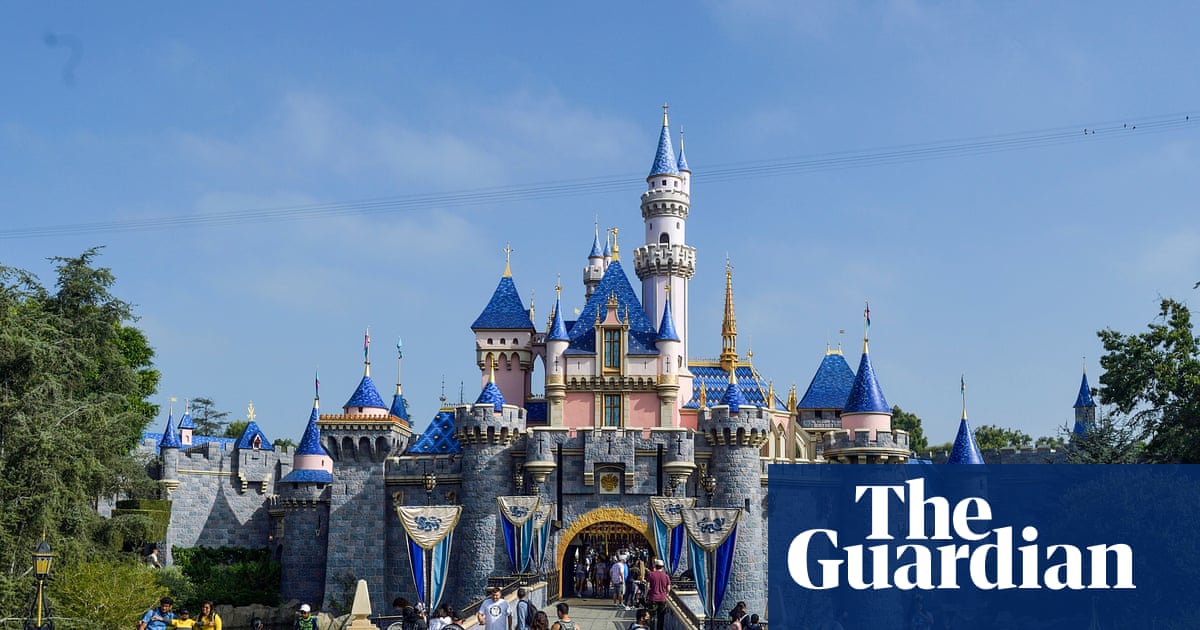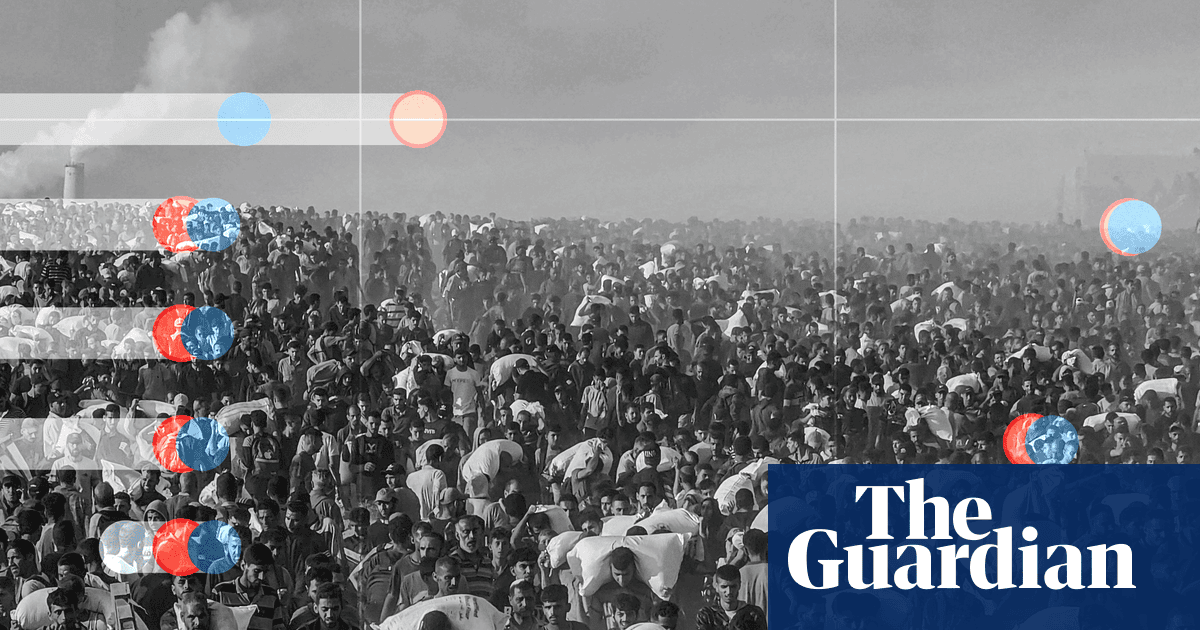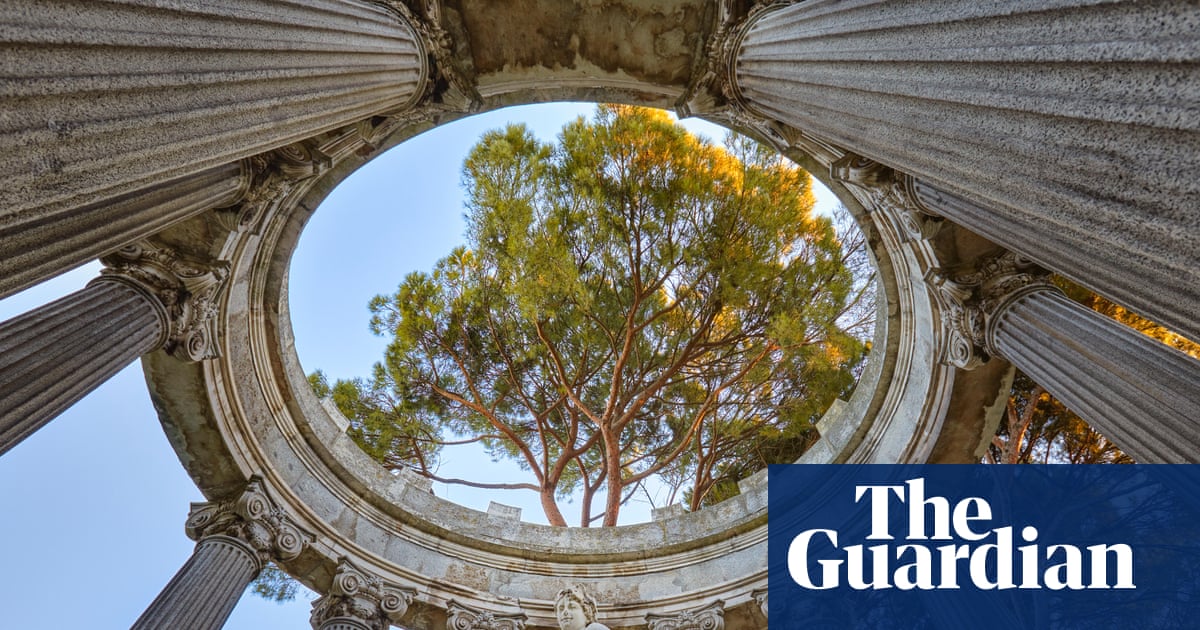Earlier this year, Donald Trump appointed a 28-year-old Doge alumnus, Jeremy Lewin, to oversee his administration’s approach to global aid. Lewin’s primary task has been to gut the US’s aid funding. In an interview with the New York Times, Lewin argued that the traditional approach, which he termed the “global humanitarian complex”, didn’t help poor countries “progress beyond aid”, instead keeping them dependent. The system, he continued, has “demonstrably failed”.
This isn’t just the Trump administration’s view. For decades, there has been a robust debate in academic and policy circles, discussed over drinks by development practitioners, written about by critical economists and postcolonial independence leaders, and percolating into the broader consciousness, that aid isn’t working, or at least not as promised. When the news of Trump’s USAID cuts broke this year, President Hakainde Hichilema of Zambia told the Financial Times that cuts in aid were “long overdue” and would force countries such as his to “take care of our own affairs”.
This spring, a few weeks after the Trump administration began dismantling USAID, I visited the small west African nation of Sierra Leone. I had worked there as a global health practitioner from 2015 to 2018, and in the years since I had returned often, this time as a journalist. The more I visited, the more I wondered about the effectiveness of foreign consultants deploying technocratic approaches to entrenched poverty. Not long before my spring visit, I had published a book about microfinance, once hailed as a solution to world poverty, but which I had begun to see as deeply problematic.
Despite these reservations, I knew that suddenly cutting off US funding would have huge – and in many places disastrous – consequences. In the months since USAID has been slashed, there have been reports of children starving in Myanmar and pregnant women unable to get antenatal care in Malawi, among many bleak examples. One study suggests that 14 million people could die because of the aid cuts.
Reading these reports, I worried about my friends and former colleagues in Sierra Leone. Would they be able to get their medicines? Would they be able to access a doctor when they needed one? Would panic have set in, the way so many of us felt panicked in the US?
What I found on my visit was different. Talking to friends and colleagues, the feeling they most often expressed was not panic but resignation. All of the Sierra Leoneans I spoke to – from mango sellers and electricians to health workers and senior politicians – expressed fear and uncertainty about the cuts. But they also framed the precarity of their situation as normal, even predictable. The potential catastrophes – a shortage of HIV drugs, or vaccines – were mentioned with a flippant, what-do-you-expect shrug.
One NGO driver I spoke to, who worked for a US organisation, had lost his job when the cuts were first announced in January 2025, then regained it when some funding began to flow again in April. This kind of stop-start aid didn’t surprise him. He had first become a driver for an NGO in 2014, when the world’s largest Ebola outbreak hit west Africa. Hundreds of millions of dollars were pledged by foreign donors to stop the virus, and foreign NGOs went on a hiring spree. In the years since, he had seen many of his colleagues let go as the money dried up and NGOs contracted or closed up shop entirely. Why should he expect anything different?
Mustapha Kabba, the deputy chief medical officer at Sierra Leone’s ministry of health and sanitation, told me that he couldn’t be too worried about the cuts because he didn’t actually know how much money the US government gave to Sierra Leone: the funding was so byzantine, funnelled through so many different NGOs, each with their own budget and timeline and priorities, that he didn’t have a comprehensive picture of what would be affected and therefore which gaps he’d have to fill.
There was one person I was eager to speak to in order to better understand the quiet sufferance I encountered. David Kpakiwa was born in 1961, the year his country gained independence from Britain, and the year John F Kennedy launched USAID and the Peace Corps. David’s life, and his country’s life, had been mapped on to the history of modern aid. He met early Peace Corps volunteers, watched as they became government consultants, then saw a wave of foreigners intervene during Sierra Leone’s civil war, which lasted from 1991 to 2002, before a different set of foreigners turned up to help during the Ebola crisis in 2014.
I first met David while on a trip to the eastern part of the country, where he lives, in 2016. It was the weekend, and we went for a long walk on the outskirts of the town of Koidu, in Kono district, a place known for its diamonds but which I was learning to love for its rainforest and its rocky hills. David and I connected immediately. We both find solace in wandering for hours on meandering roads. I felt as if David saw through me. Not in an unkind way, but as if he saw something I didn’t. When I told him I was part of a group of people trying to make Sierra Leone’s health system stronger, he said a group of people had come to do the same thing after the civil war ended. He observed that the same promises, sometimes even the same projects, had been offered and withdrawn, and then offered again.
David is not unusual, not a hero figure saving lives or a politician navigating this complicated aid system. He is a farmer and a gardener, often unemployed. He has never worked for an NGO. It is exactly his outsider status that made me want to hear his perspective. I wondered: what does someone like this, who has observed various forms of aid his whole life but whose life has not been dramatically altered by it, make of the apparent end of aid as we know it?
When I first met David, I had been in Sierra Leone for about a year, at the end of the Ebola outbreak in which more than 14,000 Sierra Leoneans were infected and nearly 4,000 died. At the height of the crisis, hundreds of millions of dollars of aid were poured into the country’s health system in a matter of months, to help stop the spread of the virus and treat those infected.
I was part of a small army of policy consultants who had been hired to help the health system “build back better” to ensure it was robust enough that this would never happen again. I had worked in global health before, primarily in HIV and TB advocacy and policy. I had experience in Africa – but primarily in South Africa, a country thousands of miles away and wildly different in its history, economy, cultural context and health system. Still, I felt deeply committed, moved by the devastation I saw all around me. I was angered by the fact that Ebola had spread so fast – in large part because for decades the country’s health system had suffered from underinvestment by its own government, corporations who had mined the country’s diamond fields, its former colonial power, Britain, and foreign donors.
In my first few weeks in the country, I met dozens of other foreigners at government and NGO offices around Freetown, the capital. Almost all were young, upbeat and overworked, furiously drafting policies that were intended to change the lives of millions of Sierra Leoneans. Some of these people were paid, in part, by USAID. The plans they drew up were at once specific, ambitious, diffuse. Within a matter of months, we were meant to figure out how to help the country’s agriculture sector recover, re-invigorate tourism and “strengthen government, justice and security”. Basically: fix Sierra Leone.

One evening a few months into my stay, I was invited to a planning session at a consultant’s home, a gated white house with gleaming floors and new leather couches. On behalf of Sierra Leone’s government, a small group of us were to outline, in just a few hours, a city-wide programme that would be paid for by foreign donors and be endorsed by the highest levels of the ministry of health. The programme would start the next day.
Food was ordered and champagne opened to help us get through the night. On a personal level, I liked my colleagues. They were hard-working and seemed to genuinely care about creating a better healthcare system. Still, I had an out-of-body feeling for much of the evening, thinking: a group of five foreign people, drinking champagne and sketching, on a white board, a plan for Sierra Leone’s ministry of health? This can’t be right.
There were other things that made me uncomfortable. I found it strange that, as a foreign worker, three meals a day were cooked for me and I had access to a driver 24/7. I was housed in an apartment with a balcony, from which I could see the Atlantic Ocean. I made about 80 times what some of my local counterparts did.
I was thrilled to be in Sierra Leone. I desperately wanted to help. But as the months ticked by, it became increasingly clear I had little idea what I was doing.
David met his first white person in primary school in the late 1960s. Although Sierra Leone had become independent from Britain nearly 10 years earlier, British teachers, administrators and managers still dominated the country’s schools. David was a bright student. He came from a family that had political clout in eastern Sierra Leone and, as one of the eldest sons, was expected to become learned and respected, too.
Early in his schooling, David was sent to Koidu, his district’s largest town, where he would receive the best education from these foreign educators. From a young age, his teachers praised him. He liked their stories and their books, but he wondered why they insisted on bringing so much of their lifestyle with them to west Africa. He also struggled to tell the white people apart: which ones were there to educate, which to mine the country’s diamonds.
So far as he could tell, all of the white people – teachers and miners alike, along with their wives and children – spent their weekends together on golf courses they had made by clearing out paddy fields, cassava farms and forests, or at a swimming pool at the “club house”, which also had a billiard room, tennis courts, squash courts and a library, and hosted weekly movie nights. “They called Koidu something like ‘Little Paris’ during this time,” said David. It was the height of the country’s diamond boom, and the district accounted for nearly 70% of the country’s gems. The small city “had almost all the facilities you would think that any big city would have”.
It was in secondary school when David noticed that, at lunch, the containers holding oil and bulgur for “school feeding” programmes were stamped with the USAID logo. When establishing the agency in 1961, Kennedy had hailed a “historic opportunity for a major economic assistance effort by the free industrialised nations”. The aim was to promote growth in less developed countries and to bring about the day when they “will no longer have to depend on outside assistance”.
This was the height of the cold war, when newly independent countries across the developing world were considering whether to align with the Soviet Union or the US. In this struggle, USAID was an instrument of soft power. Radio shows, educational programmes, agricultural training and food distribution would demonstrate the benevolence of the US and the power of its free market.
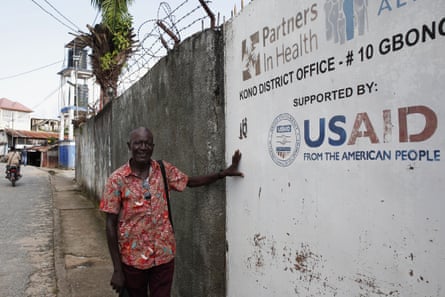
In its first decade, USAID focused on large infrastructure projects meant to spur development: dams, roads, industrial farming. Almost immediately, there were criticisms: that dams flooded nearby communities and degraded the local environment, that poor local farmers were being displaced by hi-tech farms USAID was promoting. Many of the programmes were funded by loans, not grants, meaning poor governments were on the hook for projects that often didn’t show much evidence of success. African and Latin American leaders voiced their concern about what they saw as a new form of colonialism, and what it would do to their newly independent countries.
So American aid changed. By the time David came across USAID lunch rations in the 1970s, the agency had shifted away from big-ticket, state-level programmes towards a “basic needs” approach that targeted the individual through nutritional assistance, education and healthcare. Such grassroots, community-based efforts would be supported by the Peace Corps, also set up by JFK. The programme would send Americans overseas for two years to support “the great common task of bringing to man that decent way of life which is the foundation of freedom and a condition of peace”, Kennedy proclaimed. He envisaged that the corps would demonstrate to the world the goodness of the US. But he also wanted young Americans to learn about the world. Corps members would be volunteers, not government employees. They were expected to eat local food, learn the language. Thousands of idealistic young Americans signed up.
On school holidays, when he went back to his village, David began to notice unwashed young Americans hanging out with his friends and family. Most wore loose fitting clothing, or sometimes African prints. They wandered around, going to different villages, where they would cook and eat with Sierra Leoneans, take forest walks, play with children. “They tried to live a simple life, make friends, learn [local] ways of life,” David remembers. “They advised our people, but they learned a lot from our people, also.”
As a game, David and his friends would get themselves very dirty, rolling around in the dust, “and then we’d say, ‘Hey, we’re doing Peace Corps style!’” Some of the Americans gave David their old novels. Others paid the school fees of local kids, helped them with their lessons and gave them extra food. But beyond long walks and lazy days reading, “I couldn’t figure out what they were actually doing,” David recalls. “They didn’t seem to be too busy.”
Even though JFK had pledged to send men and women qualified to carry out specific jobs, the volunteers David met “were just doing small things. Not what really needed to be done. Their effort wasn’t even going to begin to tackle the problem [of poverty]. We didn’t understand what they were actually bringing us.”
David was not alone in his observation. One Peace Corps director, reflecting afterwards on the work of the agency in the 1960s, noted that “projects throughout the world were not sufficiently oriented to the immediate needs of the country”. In 1967, the director wrote, Pakistan decided not to request additional volunteers because it “determined that its needs were for technicians and specialists of a more sophisticated level than the Peace Corps generally provides”.
Despite his early educational aptitude, David was forced to drop out of school at 16 when his father became a prominent figure in the opposition party in the eastern region, and as such found himself shut out of jobs and contracts. David moved back home to his village, where he became bored and restless. In the 1980s, looking for new opportunities, he moved to neighbouring Liberia with his brother. There, he met a Peace Corps volunteer I’ll call Duncan.
David had heard of Duncan even before he met him. Everyone knew about Duncan, it seemed. Legend had it that Duncan loved Liberia so much that he served for two Peace Corps terms, then decided to stay, setting up life in a village. Duncan married two African women, fathered seven children, and was a missionary who translated the Bible into Gbandi. In his village, Duncan “was like a king, he was like a god, his word was like law in the area”, David said. “He made sure the people there had hydroelectricity in their small community.”
David was going through a rough patch when he met Duncan. In exchange for tutoring his kids, Duncan let David live with him for a while. They ate dinner together every night. To this day, David remains touched that Duncan made a point of never starting without him. During these meals, David watched as Peace Corps volunteers new to the country sought Duncan’s advice. Duncan had begun to work with the Liberian government, although David was not sure in what capacity: “the ministry of local government or something like that, even though he was a white man”. David said he was paid by the US government. (From 1962 to 1980, Liberia received the most US aid per capita of any African country.)
David’s time with Duncan coincided with his own internal political awakening. He embraced the anti-colonial, Pan-Africanist ideology that dominated Africa and the Caribbean throughout this period. Then in his 20s, David would sing along to Bob Marley’s Zimbabwe while walking, or doing chores: “Every man got a right to decide his own destiny / And in this judgment there is no partiality / So arm in arms, with arms, we’ll fight this little struggle …” David wondered whether foreign influence, such as the Peace Corps volunteers and Duncan’s role in a government with strong ties to the US, was a continuation of colonialism under a different guise.
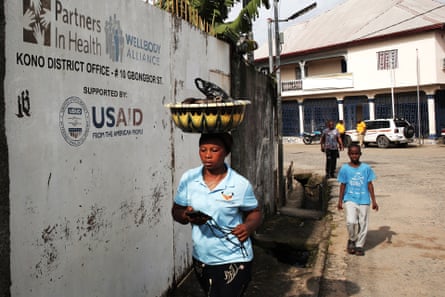
In December 1989, Charles Taylor, a Liberian political figure who had been educated in the US, invaded Liberia from the Ivory Coast in order to overthrow the government. After fighting reached the streets of Monrovia, David made his way back to Sierra Leone. But the war followed him. In 1991, with support from Taylor, a rebel group tried to topple Sierra Leone’s president, kicking off a decade-long civil war. The conflicts in Sierra Leone and Liberia were largely funded by the diamond trade. David’s home of Kono was a diamond mining district, and it brought violence to the area. He left his home again, moving west this time, to the capital, Freetown.
As the conflict dragged on, David started seeing different foreigners coming to the country: more people involved in the military and mining, fewer young people coming to live languorous lives in “the bush”.
Foreigners intervened sporadically in the conflict. In 1994-5, the government hired a private army run by a South African security firm, with the extraordinary name Executive Outcomes. The group had contracts with the mining industry in Kono and was initially hired to capture diamond mines from the rebels. According to Sierra Leone’s Truth and Reconciliation Commission, an IMF loan was used to pay Executive Outcomes.
The government also deployed a chaotic force of west African troops from various countries against the rebels, nearly 12,000 strong and staffed largely by Nigerians. Reports of horrendous atrocities against civilians, primarily by rebels but also the army, got the world’s attention. There had been widespread reporting of the horrors of the 1994 Rwandan genocide, after the UN and other forces had been woefully slow to react. By 1997, Sierra Leone received the largest UN peacekeeping force in existence at the time, made up of Russians, British, Nepalis, Ghanaians, Germans, Jordanians and others. In 2000, British troops arrived to reinforce the UN and government forces.
It was hard for David to tell what motivated these various players, or even to understand what it was they were doing or whom they answered to. Foreign soldiers would be in the streets of Freetown one day, then gone the next. Who was in charge of them? They were meant to be fighting the rebels, but Human Rights Watch reported that some of the Nigerian soldiers allegedly killed women and children, too. In Freetown, David regularly saw violence perpetrated by fighters affiliated with all sides of the conflict. Where did they get their weapons? Their food? The conflict seemed connected to a network of powerful people far beyond Sierra Leone. He became distrustful of everyone he met, journalist or aid worker, sure that “one way or the other they were mercenaries”.
The war officially ended in early 2002. A new government promised reconciliation, justice, accountability. The end of the conflict ushered in grand promises of global aid, including the launch of policies to eradicate extreme poverty and hunger, and achieve universal primary education within 15 years. The international community pledged hundreds of millions of dollars to rebuild Sierra Leone. Foreign consultants, military experts, doctors, lawyers and engineers would help reform the government, courts, education and healthcare.
David saw dozens of new NGOs and initiatives spring up. Training schemes for farmers and empowerment programmes for women, new schools for orphans and settlements for people whose arms or hands had been cut off by the rebels. Houses were erected, community halls built, water pumps installed. The scale and ambition were dizzying. At times, the projects were disjointed and ill-planned, and there was little oversight. “Just after the war, there were a lot of [NGO] projects that did not do anything for anyone,” Ibrahim Tommy, executive director of Sierra Leone’s Centre for Accountability and the Rule of Law told the UN news service in 2014. “Donors just wanted to fund anything that made them sound like they were involved in Sierra Leone. There was that period of madness.” By 2009, according to a government report, aid made up 18% of the country’s GDP.
After the war, David moved back to Kono. He set up a small homestead on his family’s land on the outskirts of the district’s main city, not far from a new town created for amputees. The NGO that erected it built a concrete structure, installed an outdoor gym and sunk a borehole to signify the founding of a village; positive moves, although the population still lived in poverty. Down the road, David surrounded his farm with tropical flowers.
One day in 2012, David walked by a spot selling palm wine and heard an American accent. A foreign man was trying to chat to some locals over drinks, but it wasn’t easy, since he could not speak Krio, the country’s main language. David stopped at the bar and interpreted for a bit. He learned the man was an anthropology professor from a US university. David invited the professor to his place to talk more.
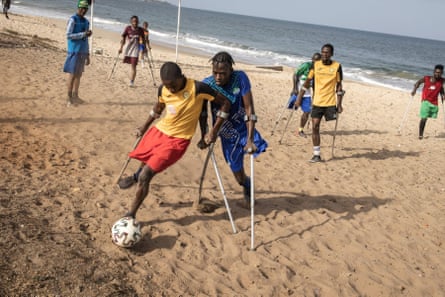
David was pleased that the professor seemed impressed by the flowers he had grown. He learned that soon the man’s students would be coming to Sierra Leone. Interest in global health was at its peak, and after effective Aids treatment programmes were established – such as the Global Fund and the President’s Emergency Plan for Aids Relief, or Pepfar – many NGOs began using aid money to support affiliated health programmes: not just HIV testing and treatment, but building new hospitals, caring for pregnant women and newborns, and trying to strengthen health systems more broadly. By 2010, foreign aid was funding millions of healthcare workers and researchers, at least in part, and HIV was no longer a death sentence. In this moment of optimism, many of the world’s top universities, particularly those in the US and UK, set up global health programmes.
David learned that the professor’s students would be coming to help at a struggling clinic half an hour’s walk from his house. The clinic was hoping to tap into this vast global funding apparatus to expand into treating HIV and malaria and improving maternal and child health.
When the students arrived, they gravitated towards David’s place. In the evenings, he brewed “jamba tea”, made of weak marijuana stalks, and cooked dinner while they talked on the front porch. David thought they were smart and perceptive. He enjoyed explaining Sierra Leone to the kids. He wanted them to understand its complicated history and local customs – whom to greet when first entering a village, the importance of showing respect. Now in his 50s, David was the one holding court. His warmth towards these young people coincided with him rethinking the harsh way he had viewed the “unwashed” Peace Corps volunteers from years before. He remained unsure of their usefulness, but he was moved to hear that several former volunteers had set up an organisation to support some families in Kono, such as paying school fees, decades after they had left Sierra Leone.
David spent several summers with these students. Then, in mid-2014, one told him he had heard news of a virus breaking out in nearby Guinea. They were anxious that since Kono bordered Guinea it might spread there, too. Soon, it did. People started showing up in clinics and hospitals with high fevers and severe diarrhoea, vomiting blood. The local health system was quickly overwhelmed. Sierra Leonean clinicians cared for patients as best they could, offering water to rehydrate and painkillers for fever. Some, fearful, refused to work at all. Patients filled hospital corridors, where some died. People began to avoid health centres, since it seemed you had about as good a chance of dying there as dying at home. The disease spread; soon, thousands across the country were infected.
A few months into the outbreak, foreign medical teams arrived, bringing much-needed supplies, expertise and personnel. Although extremely deadly, Ebola is not especially complicated to treat. It requires a clean environment, lots of rehydration, isolation and careful monitoring over time. The foreigners set up treatment centres with beds, needles, IV fluid, gloves – basic things, but things that many Sierra Leonean health centres didn’t have. After several weeks, in Kono, even those on the high risk list – little babies and old grannies – were surviving.
The nearly $1bn spent on fighting Ebola in Sierra Leone went not just on treatment, but also on salaries, apartments and drivers for foreign medical staff, flights, conferences, food, mobile phone bills. Many of the clinicians received hazard pay, to incentivise and reward life-threatening work, and lived in gated compounds, where they had meals cooked for them and comfortable spaces to rest and, if necessary, quarantine.
All this made sense on paper: if they were to go abroad and risk their lives, foreign medical workers needed assurances they would be safe. But to Sierra Leoneans observing the influx of foreign workers and the way they lived, it could be hard to draw a line between necessity and excess. David felt shocked when he learned that one foreign worker with whom he had become friendly had saved up so much hazard pay she’d bought a new car back in the US. “They come and take the money and go,” said David. “It’s the same problem with the ones who come in for the minerals and then leave.”
David was not alone in viewing the foreign aid workers with some mistrust. According to one study, “scepticism and resistance were widespread”, as some members of the public suspected that “Ebola was a crisis manufactured for external benefit”. In response, national education campaigns, funded by foreign dollars, were launched to encourage people to call a new hotline, use ambulances, trust health workers. Military-style “mop up campaigns”, encouraged by the UN and some foreign NGOs, swept communities, identifying sick people and bringing them in for treatment. The campaign was effective in reducing the transmission rate. It could also be scary: soldiers manning checkpoints and yelling at market women felt far too reminiscent of the civil war.
Then, as Ebola drifted into memory, foreigners left, as did much of their money. Within a matter of months, Sierra Leone’s foreign aid halved. A few years later, as David and I were taking a ride around Freetown in a poda-poda, a public minibus, we heard fellow passengers half-joking that, as the economy worsened, the country needed “another Ebola” if money was ever going to flow like that again. David looked at me and shrugged.
In the years since I first met David, he’s begun a relationship and had two children. We speak weekly, by WhatsApp, about the world, the books we’re reading, our lives. When I visit him in Sierra Leone, we always try to go to the beach, a place of calm and reflection for both of us.
During my visit this spring, David and I found ourselves again on the edge of the Atlantic Ocean, on Freetown’s peninsula, the city’s green hills bordering our view. It was a perfect day: crisp, bright, blue. It happened to be the 64th anniversary of the country’s independence. David lit up a joint, blew out some smoke, coughed, then mused: “It just crossed my mind, if you’re dependent too much, you’re not going to be happy. We’re still very much in-dependence. So, we can’t really be happy.”
David is not a Trump fan, but he told me that he is not against the idea of a global aid shake-up. “Sometimes I think, we’ve tried those old ways,” he said. “I don’t think that I’ve really seen anything [in my life] that’s made any difference. If anything, it’s just gotten worse.” But, he continued, “we can learn from those things and see how we have to change. We have to learn why these other people failed, you know?”
Whether the Trump administration is truly interested in learning from past failures is another matter. Listening to the New York Times interview with Lewin, I thought of a conversation I had recently had with a source for an article about the Trump administration’s restrictions on federal student loans. We talked about how ironic it was that people like her, who had been sounding the alarm about rising student debt, were now concerned that Trump would make getting loans harder. On its face, Trump’s policy seemed to address her concerns: if there was too much debt, then limit lending. But, she continued, in every executive order she had read, the administration would have one sentence correctly identifying the problem, followed by a “batshit crazy solution”. The solution isn’t to restrict loans. It’s to fix the way higher education is funded.
Something similar applies to aid. It is reasonable to say that the global approach to humanitarian aid needs to change. But abruptly ending projects that sustain lives and upending economies that have, over decades, become dependent on aid is so far from a solution that it undermines any part of the analysis that might be correct.
At what may be the end of a grand experiment in global aid, David, now in his 60s, is used to its ebbs and flows. He seems to be watching the current slashing of contributions with a sort of distant calm, the way one may absent-mindedly watch the tide going in and out: you don’t have to follow too closely, because you already know the pattern.

 6 hours ago
5
6 hours ago
5

